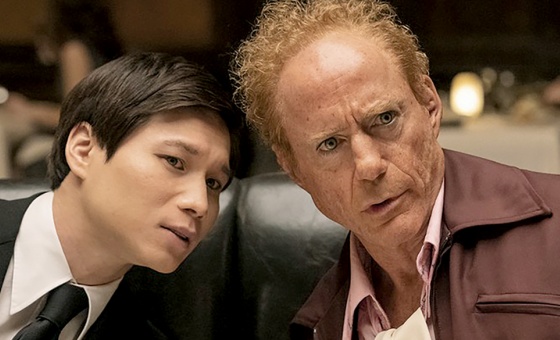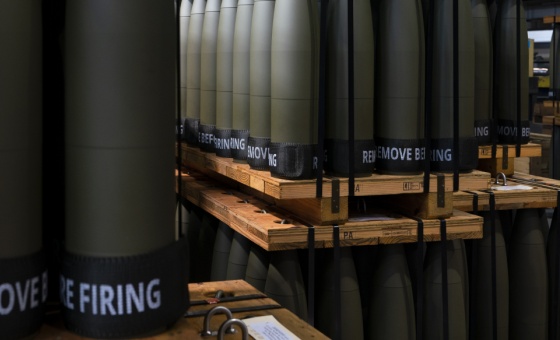This is the last article you can read this month
You can read more article this month
You can read more articles this month
Sorry your limit is up for this month
Reset on:
Please help support the Morning Star by subscribing here
Spies in the Congo — The Race for the Ore that Built the Atomic Bomb
By Susan Williams
Hurst £16.99
TWO excellent novels have been set in the former Belgian Congo and exposed the CIA’s involvement in the country’s affairs: Barbara Kingsolver’s The Poisonwood Bible and Ronan Bennett’s The Catastrophist, set in the Congo just before independence, with the rise and fall of Patrice Lumumba, but to date there has been no comprehensive, non-fiction coverage of the more recent history of imperialist exploitation of the Congo.
Spies in the Congo is the untold story of one of the most tightly guarded secrets of the second world war: the US’s desperate struggle to secure enough uranium to build its atomic bomb.
Here, Williams tells the intricate tale of a special unit of the US Office of Strategic Services (OSS), the forerunner of the CIA, that was set up to purchase and secretly remove all the uranium from the Shinkolobwe mine in the Katanga province of the Belgian Congo that the US could get its hands on.
The uranium would be used to make the bombs dropped on Hiroshima and Nagasaki.
Her book gives us a thrilling account of the extraordinary efforts of the US OSS, together with the British SIS, in gaining control of the Congo’s uranium and keeping it out of Hitler’s hands. It often reads like a fusion of novels by Conrad and Greene.
This is, once again, a story of the ongoing Western exploitation of the African continent, leading to dire impoverishment and post-colonial dependence.
The author pieces together this history forensically. Making full use of freedom of information requests, both in the US and Britain, she has been able to piece together a secret world long hidden away in dusty state archives.
It is a little-known story, but one with a sadly familiar ring — and ultimately devastating consequences.
As Williams notes, her only sources are the documents bequeathed us by the white colonialists and post colonialists who exploited the Congo’s resources.
The men and women who laboured and died so that the US could build its atomic bomb, remain unheard and undocumented.
The Belgian Congo was notorious for its horrendous treatment of the native population.
By 1940, its population had shrunk to 15 million. The white rulers, largely Belgian, ran the territory with draconian brutality and operated a strict apartheid system administered by a Bureau de la Population Blanche (Whites) and a Bureau de la Population Noire (Black).
The US consul during the 1940s recorded that lashings with a cat-o-nine-tails or a chicote (a whip made from hippopotamus hide, with razor-sharp edges and tipped with metal) was a regular punishment for even the most minimal infringements.
Blacks could be clubbed for not stepping aside for a white on the pavement; hands were routinely amputated for minor theft and if a driver ran over a black person, he would reverse and run over him again, executions were a frequent punishment.
In the run-up to and during the war, the reactionary Catholic church in the Congo, in cahoots with local Belgian business bosses and King Leopold himself, were unashamedly pro-Nazi and wanted the Congo to remain “neutral” during the war.
Luckily for the US the local managing director of the powerful Union Miniere company, which owned the uranium mines, and the territory’s governor general sided with the allies.
The mines owned by the company produced copper, cobalt, radium, zinc, cadmium, germanium, manganese, silver gold, tin and diamonds alongside uranium — a treasure trove for business.
The Shinkolobwe mine is the most important deposit of uranium yet discovered anywhere in the world and was vital to the success of the Manhattan Project.
Most sources of uranium ore come from mines with low percentages of uranium, making it costly to extract, but the Congo produced ore of up to 75 per cent purity.
Given that Nazi Germany was also working on an atomic bomb, it was an urgent priority for the US to prevent the uranium being diverted to the enemy — a task entrusted to Washington’s secret intelligence agents.
Sent undercover to colonial Africa to track the ore and hunt down Nazi collaborators, their assignment was made even tougher by the complex political reality and by tensions between Belgian and US and British officials.
The author, Susan Williams is a historian and senior research fellow at the School of Advanced Study, University of London. Her pathbreaking books include Who Killed Hammarskjold? (2015), the UN secretary-general, who died in suspicious circumstances in 1961, triggered a new, ongoing UN investigation into his death. Her latest book is White Malice: The CIA and the Covert Recolonisation of Africa (2021).
Spies in the Congo is a highly informative and valuable historical record.










